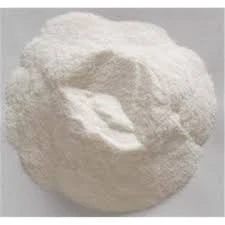
Dec . 09, 2024 16:48 Back to list
Understanding the Properties and Applications of Hydroxyethyl Cellulose in Various Industries
Understanding Hydroxyethyl Cellulose Composition, Properties, and Applications
Hydroxyethyl cellulose (HEC) is a cellulose derivative that has gained significant attention in various industrial applications due to its unique properties. The formula of hydroxyethyl cellulose illustrates its composition and functionality, making it an essential ingredient in many products across different sectors.
What is Hydroxyethyl Cellulose?
Hydroxyethyl cellulose is a non-ionic, water-soluble polymer made from natural cellulose through a series of chemical reactions that introduce hydroxyethyl groups into its structure. The basic structural unit of cellulose fibers is composed of anhydroglucose units linked by β-1,4-glycosidic bonds. By chemically modifying cellulose, hydroxyethyl groups (-CH2-CH2-OH) are added, resulting in a compound that retains the advantageous characteristics of cellulose while enhancing its solubility and usability in various applications.
Chemical Formula
The chemical formula of hydroxyethyl cellulose can be represented as (C2H4O)n, where 'n' indicates the degree of polymerization. The degree of polymerization affects the molecular weight and viscosity of the resulting hydroxyethyl cellulose. The variability in the ratio of hydroxyethyl groups leads to different grades of HEC, each tailored for specific applications, whether in pharmaceuticals, personal care, construction, or food products.
Properties of Hydroxyethyl Cellulose
One of the key features of hydroxyethyl cellulose is its ability to dissolve in water, forming a clear and viscous solution. This property makes it an ideal thickening agent and stabilizer. The viscosity of the HEC solution can be adjusted by altering the concentration and molecular weight of the polymer, allowing for customized formulations that meet specific requirements.
Moreover, HEC is recognized for its non-toxic and biocompatible nature, making it suitable for applications in cosmetics and pharmaceuticals. It imparts desired rheological properties, enhancing the texture and stability of formulations, from gels to creams.
Additionally, hydroxyethyl cellulose exhibits excellent film-forming capabilities and can act as a binder, enhancing the cohesion of particles in solid formulations
. Its ability to retain water also makes it a useful ingredient in products designed to maintain moisture, such as lotions and hair conditioners.hydroxyethyl cellulose formula

Applications of Hydroxyethyl Cellulose
The versatile nature of hydroxyethyl cellulose makes it valuable in multiple industries
1. Cosmetics and Personal Care HEC is widely used in shampoos, conditioners, lotions, and gels due to its thickening and emulsifying properties. It enhances the sensory characteristics of products, providing a smooth and pleasant feel.
2. Pharmaceuticals In the pharmaceutical sector, HEC serves as a binder and a thickening agent in formulations like gels and creams. Its compatibility with active ingredients makes it suitable for controlled-release applications.
3. Construction HEC is employed in the construction industry as a thickener in cement-based products, improving workability, water retention, and adhesion. It enhances the performance of tile adhesives, plasters, and grouts.
4. Food Products In the food industry, hydroxyethyl cellulose acts as a stabilizer and texture enhancer in various food applications, providing a desirable mouthfeel and improving the overall quality of food products.
5. Paints and Coatings HEC is utilized in the formulation of water-based paints and coatings, contributing to viscosity control and stability, crucial for achieving uniform application and finish.
Conclusion
Hydroxyethyl cellulose is a remarkable compound with a diverse range of applications stemming from its unique properties derived from its chemical composition. Its ability to serve as a thickener, stabilizer, and binder makes it indispensable in industries such as cosmetics, pharmaceuticals, construction, food, and paints. The ongoing research and development in the field of cellulose derivatives promise to uncover new applications and enhance the functionality of this versatile material, making it a crucial component of modern formulations.
-
Versatile Hpmc Uses in Different Industries
NewsJun.19,2025
-
Redispersible Powder's Role in Enhancing Durability of Construction Products
NewsJun.19,2025
-
Hydroxyethyl Cellulose Applications Driving Green Industrial Processes
NewsJun.19,2025
-
Exploring Different Redispersible Polymer Powder
NewsJun.19,2025
-
Choosing the Right Mortar Bonding Agent
NewsJun.19,2025
-
Applications and Significance of China Hpmc in Modern Industries
NewsJun.19,2025







